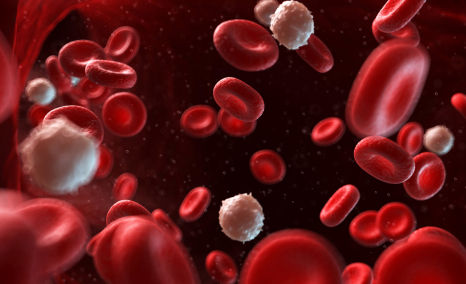The company released top-line data from the study earlier this year but did not share detailed findings. It is lagging behind a rival Lp(a) targeting an antisense drug called pelacarsen from Novartis and development partner Akcea, which is already in a phase III trial called HORIZON with major cardiovascular events (MACE) as its primary endpoint.
Novartis exercised a USD 150 million option on the drug in 2019 after phase II results with once-weekly dosing of 20mg pelacarsen showed that 98% of patients achieved a reduction in Lp(a) levels that brought them below the 50mg/dL threshold considered to be a risk. Amgen’s less frequent dosing may work in its favor, but the sheer size of the potential market means that if both drugs are approved, there will be plenty of room in the market for both.
AstraZeneca and Sanofi Secures Approval in the EU for Beyfortus
Beyfortus, the first single-dose drug to protect newborns and infants from respiratory syncytial virus (RSV) infections developed by AstraZeneca and Sanofi, has been approved in the EU. According to the two pharmaceutical companies, the antibody-based drug has been cleared by the European Commission with a broad label, covering both full-term and pre-term babies, as well as those with various health conditions that could make them vulnerable to RSV. It is the first time Beyfortus (nirsevimab) has been approved by a regulatory body.
Synagis (palivizumab) from AstraZeneca is currently the only approved drug in Europe for passive RSV prophylaxis, but it must be administered monthly, whereas nirsevimab can provide protection for the entire RSV season with a single injection. Sobi sells it in the United States.
Beyfortus reduced the incidence of medically attended lower respiratory tract infections (LRTI) caused by RSV by 74.5% compared to placebo in the MELODY trial, and it was at least as effective as Synagis in protecting pre-term infants, those with chronic lung disease (CLD), or those with congenital heart disease (CHD) from the virus in the MEDLEY study. The new drug will be available before RSV vaccines, which are intended to protect newborns in the months following birth by vaccinating expectant mothers who pass on antibodies against the virus in the womb.
Synagis, a former blockbuster that was approved in 1998, is still selling well despite losing patent protection, with AstraZeneca earning USD 410 million from the drug last year. However, revenue from the antibody is expected to plummet once Beyfortus and RSV vaccines hit the RSV market.
GSK’s Blenrep Fails in Phase III Trial in Relapsed or Refractory Multiple Myeloma
GSK has high hopes for Blenrep, its BCMA-directed cancer drug, but a failed phase III trial in relapsed or refractory multiple myeloma has cast doubt on its prospects – and even the status of its regulatory approval. The antibody-drug conjugate (ADC) Blenrep (belantamab mafodotin) failed to improve on standard pomalidomide/dexamethasone therapy in patients who had previously received at least two rounds of lenalidomide and proteasome inhibitor therapy in the DREAMM-3 trial.
The median progression-free survival (PFS) for Blenrep was around 11 months versus seven months, but this was not a statistically significant difference, as was the overall response rate (ORR) at 41% and 36%, and overall survival at 21.2 months and 21.1 months, respectively.
While the FDA granted Blenrep accelerated approval for patients with multiple myeloma who had received at least four prior therapies, including an anti-CD38 monoclonal antibody, a proteasome inhibitor, and an immunomodulatory agent, DREAMM-3 was designed as a confirmatory trial. That means Blenrep technically hasn’t met the criteria for staying on the market, and its approval for 2020 is in jeopardy. And in recent years, the FDA has become much stricter when it comes to meeting post-marketing requirements for drugs with accelerated approvals.
Needless to say, GSK’s chances of moving Blenrep up the treatment pathway into earlier-line use have plummeted, as have its hopes of making Blenrep a £3 billion blockbuster. Despite being the first drug targeting BCMA to reach the relapsed or refractory multiple myeloma market, GSK reported a £36 million profit in the third quarter.
GSK Preps Filing for Novel Antibiotic for Urinary Tract Infections
On 03 November 2022, the GSK announced that the pivotal phase III EAGLE-2 and EAGLE-3 trials evaluating gepotidacin, an investigational treatment for Uncomplicated Urinary Tract Infection (uUTI) in female adults and adolescents, will stop enrolment early for efficacy following a recommendation by the Independent Data Monitoring Committee (IDMC). This decision was based on a prespecified interim analysis of efficacy and safety data in over 3000 patients across the trials.
As per the updates by GSK, the EAGLE-2 and EAGLE-3 trials met the primary efficacy endpoint of combined clinical and microbiological resolution following treatment at the Test-Of-Cure (TOC) visit for gepotidacin versus nitrofurantoin in patients with a confirmed uUTI and a uropathogen sensitive to nitrofurantoin. The IDMC review did not identify any safety concerns.
GSK’s Gepotidacin is a novel, investigational bactericidal, first-in-class triazaacenaphthylene antibiotic that inhibits bacterial DNA replication by a distinct mechanism of action and equally and independently binds to two different Type II topoisomerase enzymes. GSK has further updates; the EAGLE-2 and 3 trials are now closed for recruitment, with final study visits and data collection anticipated during the first quarter of 2023. GSK is looking further to work with regulatory authorities to commence regulatory filings for gepotidacin in H1 2023. Moreover, full trial results will also be submitted for presentation at a scientific congress and for publication in a peer-reviewed journal in 2023.
As per DelveInsight, the uUTIs is one of the most common infections in the community, and about 150 million UTIs occur yearly worldwide. The annual incidence of Uncomplicated Urinary Tract Infection (or acute cystitis) in women is 12%. In the US, there are over 1 million catheter-associated UTIs/year, and up to 40% of hospital gram-negative bacteremia/year originate as UTIs.
Anavex Gets FDA Orphan Designation for Anavex2-73 in Fragile X Syndrome
On 8 November 2022, Anavex Life Sciences announced that the US FDA had granted Orphan Drug Designation (ODD) to ANAVEX®2-73 (blarcamesine) for the treatment of Fragile X syndrome. Christopher U Missling, Ph.D., President and Chief Executive Officer of Anavex, has said, “We look forward to working with the Fragile X syndrome community to rapidly advance ANAVEX®2-73 as a potential treatment for Fragile X syndrome while we continue to expand the late-stage clinical investigation of ANAVEX®2-73 as part of its precision medicine platform technology for both neurodevelopmental and neurodegenerative indications.”
Apart from Fragile X Syndrome, Anavex Life Sciences is working on other product portfolio platforms, which includes its drug lead candidate ANAVEX®2-73 for the treatment of Alzheimer’s disease, Parkinson’s disease dementia, Parkinson’s disease & Rett syndrome and ANAVEX®3-71 for schizophrenia, frontotemporal dementia, and Alzheimer’s disease.
Fragile X syndrome (FXS) is the most common form of inherited intellectual disability disorder affecting about 1 in 4,000 males and 1 in 6,000 females. Worldwide, an estimated 1,088,500 people are estimated to be affected by FXS. As per DelveInsight, in 2021, the total diagnosed prevalent population of Fragile X Syndrome in the 7MM was estimated to be around 120,900 in 2021. Similarly, in the US, there were around 69,798 diagnosed prevalent populations of FXS.
Currently, there is no approved treatment for Fragile X syndrome. The approval and launch of the Anavex2-73 in the Fragile X Syndrome therapeutics market is expected to immensely improve the treatment landscape in the coming years.
Sensorion Announces US FDA Grants Rare Pediatric Disease Designation to its OTOF-GT
On November 07, 2022, Sensorion announced that the US FDA had granted Rare Pediatric Disease Designation to its therapeutics candidate, OTOF-GT, a gene therapy intended to treat otoferlin gene-mediated hearing loss.
Sensorion’s is working on the OTOF-GT gene therapy development program that aims to restore hearing in people living with otoferlin deficiency. The otoferlin protein is large and is delivered to the inner ear using two standard gene therapy vectors (AAV) and assembled in place. Earlier, in September 2022, Sensorion received a positive opinion on an application for Orphan Drug Designation (ODD) from the European Medicines Agency (EMA).
Patients with OTOF mutations suffer from severe to profound sensorineural prelingual non-syndromic hearing loss. Sensorion has progressed with preclinical and clinical development plans for OTOF-GT and is on track to file a Clinical Trial Application (CTA) in the first half of 2023. The designation is another key piece in the puzzle that helps advance Sensorion towards clinical development in OTOF-GT in 2023.”
Otoferlin deficiency is one of the most common forms of congenital deafness. Currently, there are no approved therapies for Otoferlin deficiency. It is responsible for about 8% of all cases of congenital hearing loss. In the United States and Europe, about 20,000 people are affected by the Otoferlin deficiency. The positive approach and acknowledgment by the FDA and ongoing clinical development activities and research in the Otoferlin deficiency therapeutics market by major pharma giants such as Sensorion and others are expected to provide a better treatment outcome in the coming years for the affected population with this debilitating conditions.



